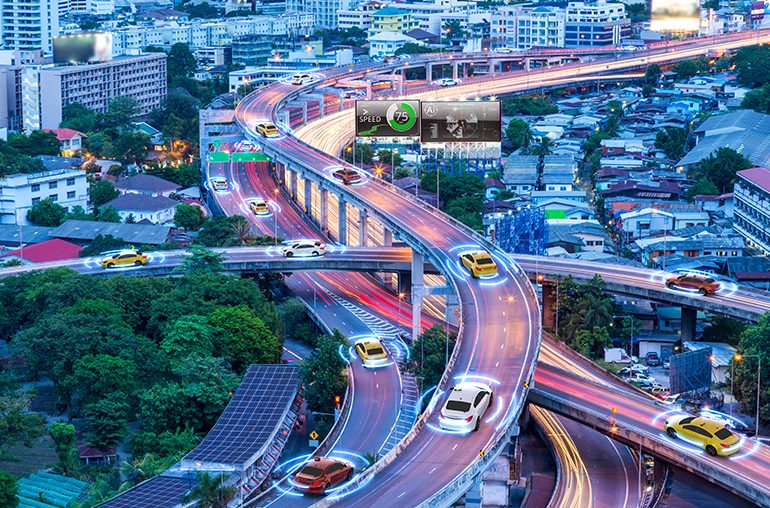
Smart city initiatives are a way for communities to respond to challenges of sustainability and efficiency. With the world’s population expected to reach 8.5 billion by 2030 and 55% of the population currently living in urban areas, cities are facing unprecedented pressures. Smart cities have implemented tech in innovative ways to overcome these challenges.
What do smart city initiatives include?
At the heart of all smart city initiatives is the desire for city governments to break free of traditional, bureaucratic silos and use innovation to serve their citizens in a more sustainable and efficient manner. Initiatives help municipalities respond dynamically and cross-functionally to the constantly evolving challenges of the real world.
According to McKinsey Global Institute’s Smart Cities: Digital Solutions For A More Livable Future Report, smart cities use a technology framework built upon three layers.
1. Internet of Things (IoT) devices
Intelligent sensors are at the core of this framework. They transmit data to the cloud over wireless networks. These devices can be used to gather data about water, waste, weather, traffic, power, libraries, hospitals, police, fire, schools, and other elements of a city’s infrastructure and services.
2. Applications
Once information is gathered, applications help cities act based on what they have learned.
3. People
It is ultimately the city employees, contractors, and citizens that will take the gathered and analyzed data and implement a course of action to execute a plan.
What’s the history of smart cities?
The iteration of a smart city as we know it today didn’t come around until the late 2000s with European early pioneers.
In 2009, the EU Electricity Directive required EU states to install smart meters to 80% of consumers by 2020. Major initiatives launched in Japan, China, and India followed. By the mid-2010s, initiatives were global. A significant milestone in the U.S. was the 2015 U.S. Department of Transportation Smart Cities Challenge. This program was aimed at mid-sized cities and Columbus, Ohio took home the $50M grant.
Europe’s 2009 edict foreshadowed one of the most widely adopted (and earliest) smart city initiatives, the smart grid. Smart grids are used by the world’s megacities and small cities alike. For example, in 2024, Chattanooga, TN, made a $280 million investment to make one of the nation’s most advanced power grids.
A smart grid is an electrical grid that includes efficiency elements such as smart meters and appliances. The launching of a city’s smart grid often corresponds with switching conventional streetlights to LEDs. Next, public transit and traffic management initiatives are popular. Connected transportation systems have some of the greatest potential to drastically enhance efficiencies throughout a city. For example, Portland, OR has deployed its “Rest in red” traffic signal timing operation to manage travel speeds and make signals more responsive to pedestrians and bikers.
Why should cities care?
A smart city framework can help make a city more effective and efficient. When a city can deploy sensors into the real-world environment, leaders can gather meaningful, actionable insights.
These real-time insights empower a city to respond to the needs of its citizens quickly, with the tools they need, and where they need them.
Additionally, smart city initiatives can help create a more equitable environment for citizens. For example, in New York City, colorful QR Codes and audio apps are helping visually impaired citizens and those who do not speak fluent English to navigate the subway system.
Getting Started
As even the most cutting-edge smart cities on the planet are still at the beginning of their transformation, there’s still a lot to learn. As a leading IoT managed service provider, MetTel is in a unique position of having a front-row-seat to successful programs across the U.S. Read the white paper to learn how one pioneering metropolis has implemented smart city initiatives.


